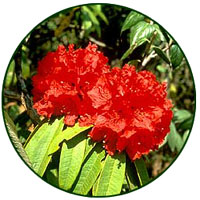 |
QUICK SEARCH
MO PROJECTS:
Africa
Asia/Pacific
Mesoamerica
North America
South America
General Taxonomy
Photo Essays
Training in Latin
America
MO RESEARCH:
Wm. L. Brown Center
Bryology
GIS
Graduate Studies
Research Experiences
for Undergraduates
Imaging Lab
Library
MBG Press
Publications
Climate Change
Catalog Fossil Plants
MO DATABASES:
W³MOST
Image Index
Rare Books
Angiosperm
Phylogeny
Res Botanica
All Databases
INFORMATION:
What's New?
People at MO
Visitor's Guide
Herbarium
Jobs & Fellowships
Symposium
Research Links
Site Map
Search
 | table of contents |
PROFILE: Ihsan A. Al-Shehbaz | |||||||
 |
In addition to his work coordinating and editing the Flora of China, curator Ihsan Al-Shehbaz studies the systematics and evolution of Brassicaceae, the mustard family, on a worldwide basis. He has described more than 70 species and 10 genera new to science.
Photo: Trent Foltz |
||||||
To Know, To ProtectChinese botanists have been working for decades to catalog the vast wealth of knowledge about their native plants. Since 1959, 129 books in 80 volumes have been published as Flora Reipublicae Popularis Sinicae (FRPS). The key to unlocking this storehouse of knowledge lies in the production of a concise, up-to-date English version, a monumental tast in its own right. "This is an endeavor of tremendous scientific importance and impact," says Al-Shehbaz. "By unlocking the knowledge of China's great botanical treasures for the rest of the world, the project brings together hundreds of Chinese and Western scientists for an invaluable exchange of ideas, training, information, and plant specimens. It is an enormous advancement for systematic and applied botany." Information from the project is important in conservation, land management, horticulture and medicine, both in China and around the world. International awareness of China's biological resources comes none too soon, as pressures from development in China are placing its remarkable plant diversity at risk. "We're in a race with time to document what's there before it's gone," says Al-Shehbaz. "If we want to have a peaceful world, to live in harmony, we have to know how to cooperate, both with humans and with other species. China's plant species represent a significant percentage of the world's total. If we don't do this kind of research, how will we know what we have and how to protect it?" | |||||||
| |||||||
Next Section >> | |||||||
| Text and photos from "The Unseen Garden" available from MBG Press. | |||||||
© 1995-2025 Missouri Botanical Garden, All Rights Reserved
4344 Shaw Blvd.
St. Louis, MO 63110
(314) 577-5100
Technical Support

